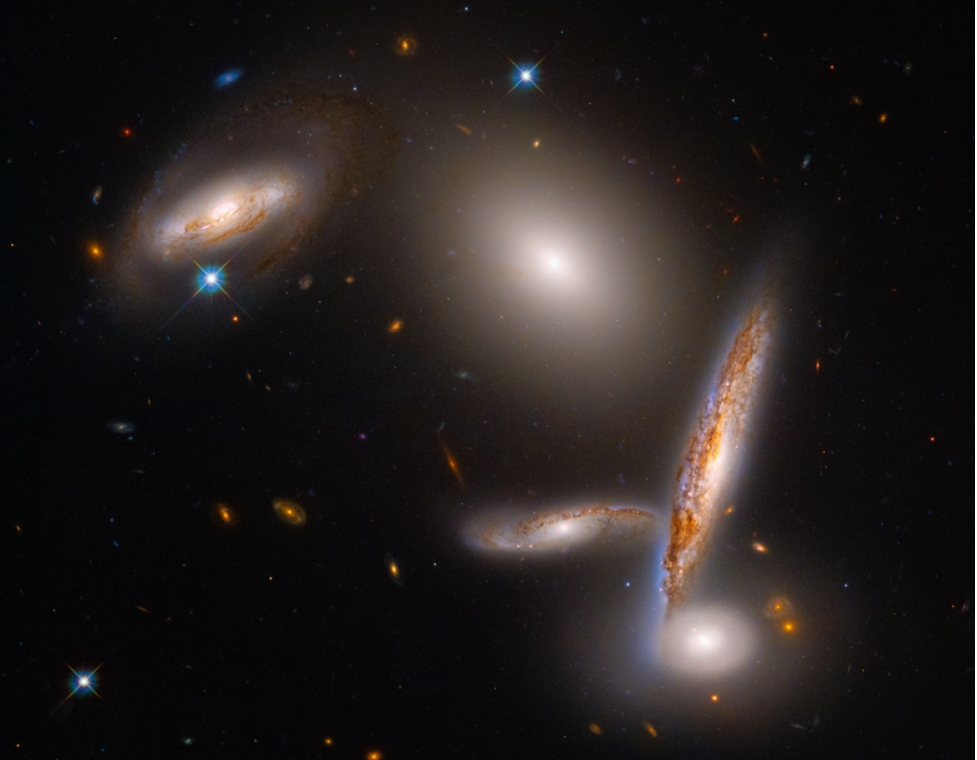The HUBBLE was launched on April 24, 1990
Our optical filters continue to generate new discoveries through the years,
In 2022 Hubble catches an amazing image of compact galaxy group.

This small group of galaxies, called the Hickson Compact Group 40, includes three spiral galaxies, an elliptical galaxy and a lenticular galaxy. In about one billion years, these galaxies will collide and merge to form a giant elliptical galaxy. For its 32nd birthday, the NASA/ESA Hubble Space Telescope captured these galaxies at a very special moment in their lifetimes as they fall together and continue their dance, but before they merge.
Though over 100 such compact galaxy groups have been catalogued in sky surveys going back several decades, Hickson Compact Group 40 (HCG 40) is one of the most densely packed.
Observations suggest that such groups may have been more abundant in the early Universe and provided fuel for powering black holes, known as quasars, whose light from superheated inflating material blazed across space.
Studying the details of galaxies in nearby groups like this helps astronomers sort out when and where galaxies assembled themselves, and what they are assembled from.
HCG 40 member galaxies are notably isolated in their own small patch of the Universe, in the direction of the constellation of Hydra.
One possibility is that there’s a lot of dark matter associated with these galaxies. If they come close together the dark matter can form a big cloud within which the galaxies orbit.
As the galaxies plough through the dark matter they feel a frictional force that results from its gravitational effects.
This slows their motion and makes the galaxies lose energy, so they fall together.
Therefore, this snapshot catches the galaxies at a very special moment in their lifetimes.
In about one billion years they will eventually collide and merge to form a single giant elliptical galaxy.
Astronomers have studied HCG 40 not only in visible light, but in radio, infrared, and at X-ray wavelengths.
Almost every one of the galaxies has a compact radio source at its core, which could be evidence for the presence of a supermassive black hole.
X-ray observations show that the galaxies have been gravitationally interacting as witnessed by the presence of a lot of hot gas amongst them.
Infrared observations reveal clues to the rate of formation of new stars.
“I remember seeing this on a sky survey and saying, ‘wow look at that!’,” said Dr. Paul Hickson, an astronomer at the University of British Columbia who re-discovered the HCG 40 group by browsing through a collection of peculiar galaxies first published by Halton Arp in 1966. “All that I was using at the time was a big plastic ruler and a magnifying glass while looking over sky survey prints.”
Reference: Science News http://www.sci-news.com/astronomy/hubbles-32nd-birthday-image-10729.html
Image credit: NASA / ESA / Hubble / STScI.








